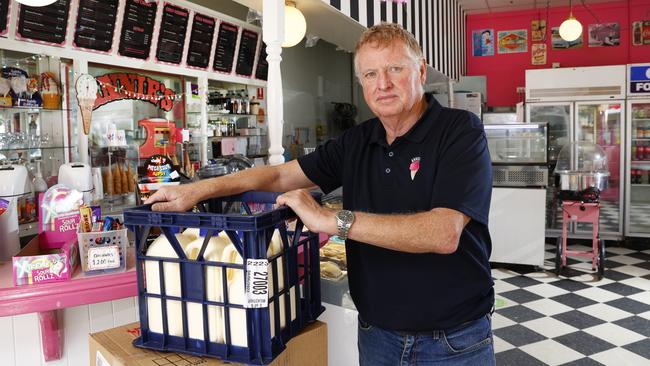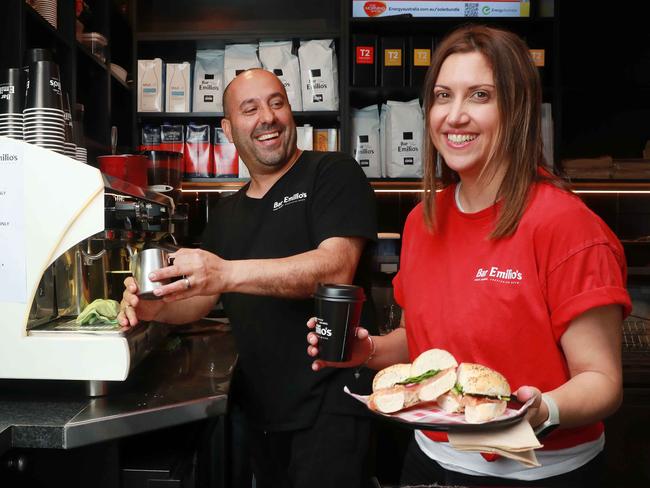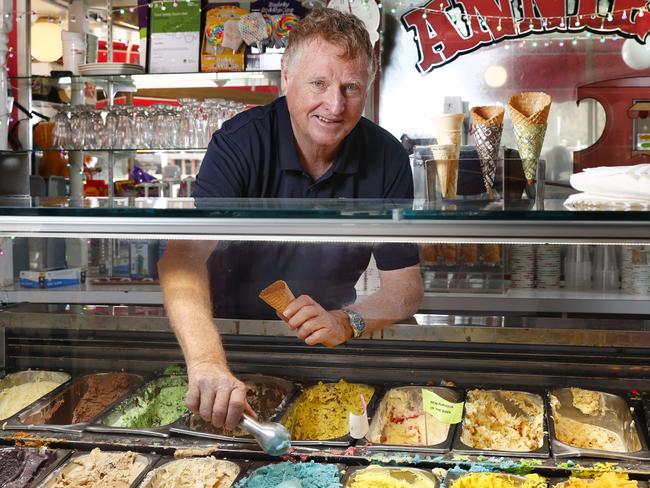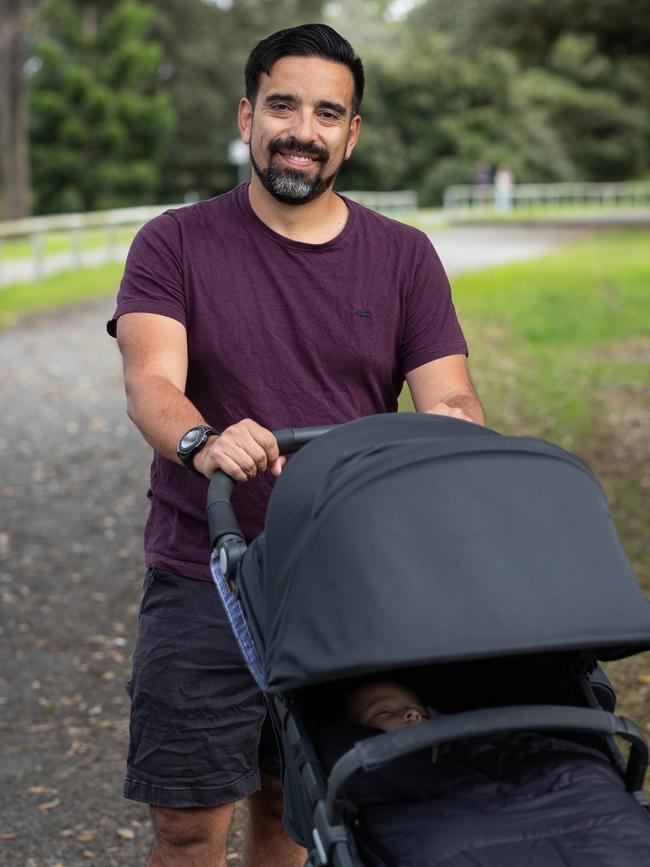Three Aussies reveal how much they are paying for electricity as prices skyrocket
Shops will close, businesses fold and home budgets buckle: Aussies reveal the toll of skyrocketing power bills, which fly in the face of the $275 cut they were sold before the election. VOTE in our poll.

NSW
Don't miss out on the headlines from NSW. Followed categories will be added to My News.
Warehouses will close, shops will shut and households will face the crunch of shrinking family budgets with electricity prices set to skyrocket over the next two years.
Contrary to the dream they were sold by the government prior to the election – which would see a $275 reduction in electricity bills – Australians are now bracing themselves for a 56 per cent rise in prices by 2024.
Café owner Emilio Panetta’s electricity bill has almost doubled with the father-of-two worried the surging power prices will make it harder to put food on the table for his family.
Mr Panetta runs a small espresso bar, Bar Emilio’s, in Drummoyne and said his weekly power bill had shot up from $90 a week to $150 a week.
Under his original power bill, Mr Panetta would pay approximately $4680 a year for electricity.

But under new projections, Mr Panetta is looking at paying $7300 in electricity bills in 2024.
He said the business had no option but to pass on the costs to its customers as they juggle a rise in the cost of groceries, petrol, and power and workforce shortages.
“When things start getting expensive like supplies, power, you put prices up on your food. It’s unfair that we have to bring it up and the cost has to go to people like me, young families, struggling every week to put food on the table,” he said.
”All of this impacts people coming in to get a simple sandwich. Cafe owners can’t wear the power all the time. I’m a small little espresso bar so imagine the impact on the big cafes. The increase is dramatic.”
Mr Panetta said the government’s promise to bring down electricity prices was in “shambles from the get go”.

“I just feel that at the end of the day they aren’t really listening to the general people.”
While some pass on their prices to customers in a bid to keep their doors open, other businesses – like Annie’s Old Fashioned Ice Cream Parlour, are questioning the medium term viability of their shop.
”We are really umming and ahhing (about) whether there’s a future in it,” said co-owner Greg Murray, who employs more than 20 people in Bathurst in NSW’s central-west.
Mr Murray said rising electricity costs would have a “major impact” on Annie’s, due to its reliance on refrigeration.
Electricity costs are about 10 per cent of their total business expenses and power is their third-largest bill, after wages and raw materials.

Mr Murray and his business partner are looking at spending between $20,000 and $30,000 to install solar panels on the building, even though they don’t own the store.
“It doesn’t take us long to recoup our money and it gives us a bit of security as well,” he said.
Waverley dad-of-one Leo Huertas pays $1000 a year for his family’s energy bill and is looking at paying $560 more in two years.
“’It’s very stressful, it’s not like we are making more money. Everything costs more so it feels like we are making less money,” the project manager said.
“Living in Sydney has become overwhelming. It doesn’t matter how much money we may, it seems like we are always not where we want to be.”




